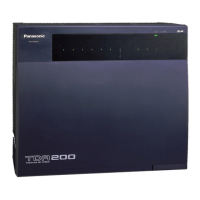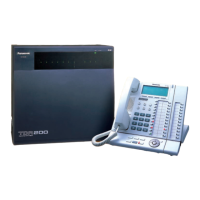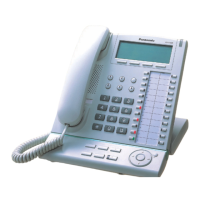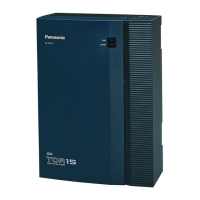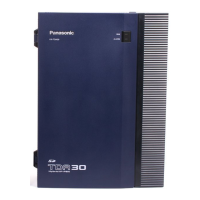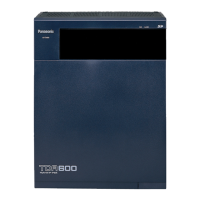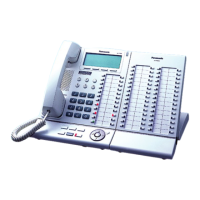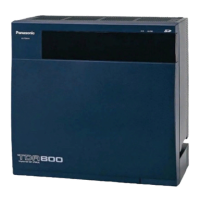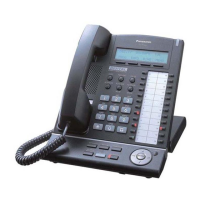1.30.4.4 Call Transfer (CT)—by QSIG
Description
The PBX transfers the call to a destination extension in another PBX in QSIG network.
If the same trunk group is used for the incoming call and the transferred call, the following situation will be
possible.
[Example]
PBX-1
QSIG
PBX-2
Dials "2000".
PBX-1
QSIG
PBX-2
Extn. 1000 Extn. 1001 Extn. 2000
Extn. 1000 Extn. 1001 Extn. 2000
Call to 2000
1
Transferred
to 1001
2
3
Extension 1000 of PBX-1 dials
extension number "2000", and the call
is sent to extension "2000" of PBX-2
through QSIG network.
The call is transferred from extension
2000 to extension "1001" of PBX-1.
The call between PBX-1 and PBX-2 is
released, and the call is connected
directly to the transfer destination of
extension 2000.
Conditions
• This feature complies with European Telecommunication Standard (ETS) specification ETS 300 261, Call
transfer supplementary service.
• This feature can be enabled or disabled on an ISDN (QSIG) port basis.
• Call Transfer with Announcement and Call Transfer without Announcement is possible (® 1.12.1 Call
Transfer).
PC Programming Manual References
3.13 [1-1] Slot—Port Property - BRI Port—Supplementary Service—
COLP, CLIR, COLR, CNIP, CONP,
CNIR, CONR, CF (Rerouting), CT, CCBS, AOC-D, AOC-E, 3PTY
Feature Guide 343
1.30.4 QSIG Standard Features

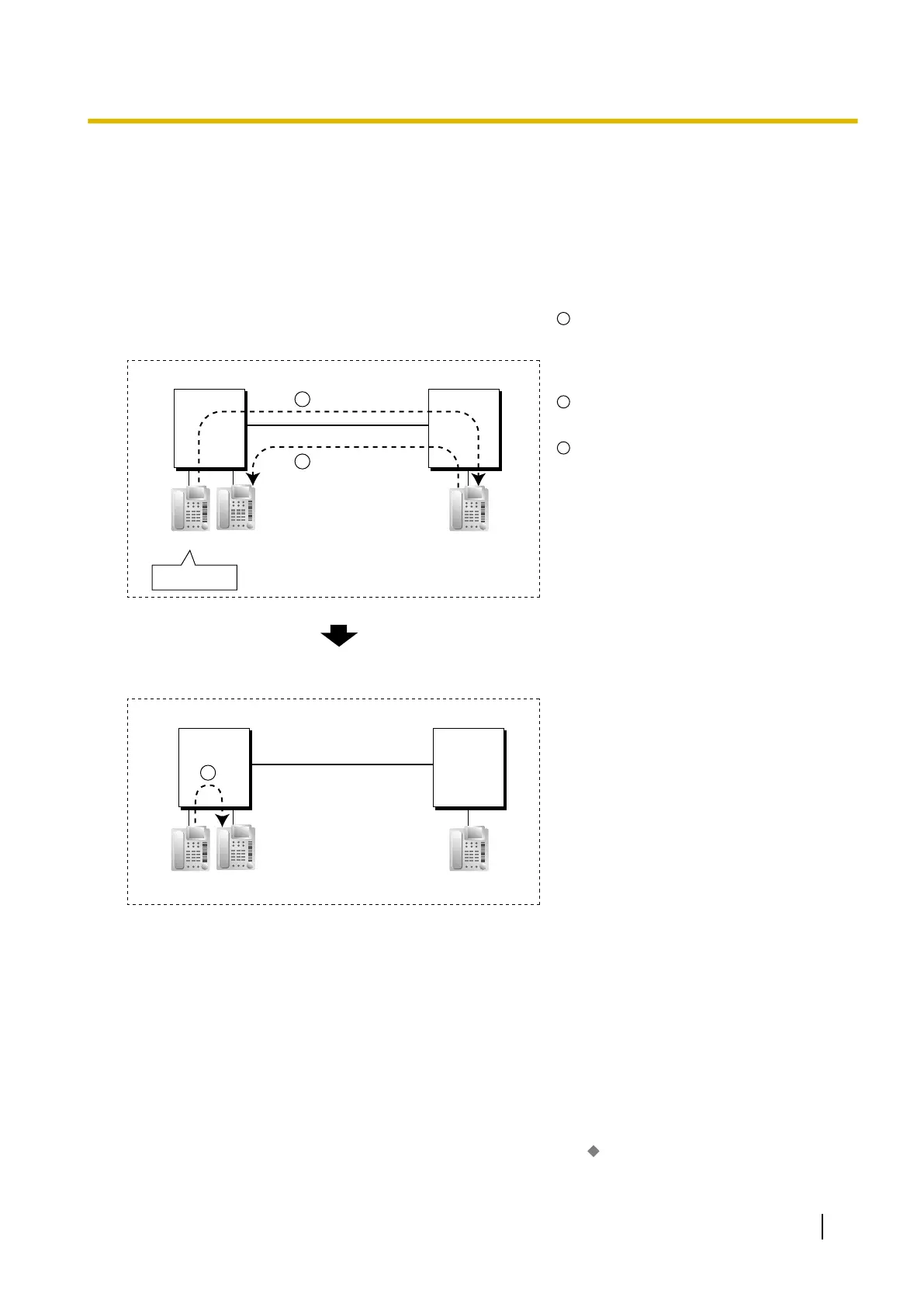